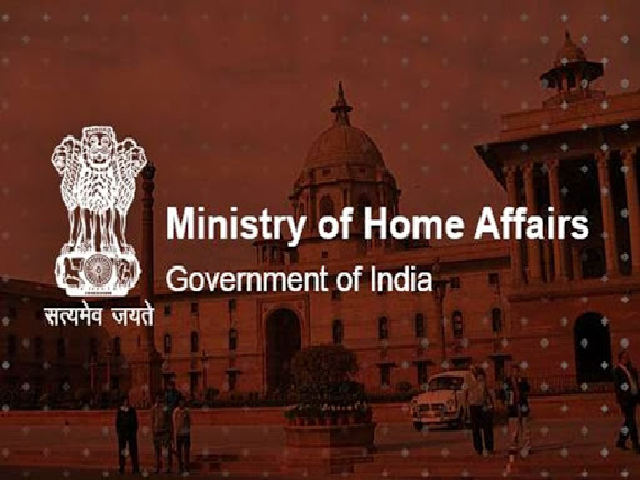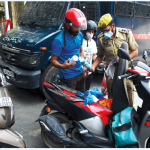Srinagar, July 24: Jammu and Kashmir has registered 1,124 cases under the Narcotic Drugs and Psychotropic Substances (NDPS) Act and witnessed 1,104 drug seizures in the year 2022, according to the latest data released by the Ministry of Home Affairs (MHA) based on statistics compiled by the National Crime Records Bureau (NCRB).
As per the NCRB’s 2022 report, Jammu and Kashmir witnessed 1,104 seizures of various narcotics in that year, underlining the continued challenge of drug trafficking and consumption in the Union Territory. This comes amid a nationwide total of 72,049 NDPS cases and 88,662 seizures, as per official statistics tabled by the Ministry.
Union Minister of State for Home Affairs, Nityanand Rai, informed Parliament that the MHA has adopted a comprehensive approach involving coordination with states and UTs, financial assistance, intelligence sharing, and capacity-building measures to combat drug trafficking across India.
Across India, 72,049 NDPS cases were registered in 2022, and 88,662 drug seizures were recorded. Jammu and Kashmir accounted for a significant share, ranking 13th in total drug seizures among all states and union territories.
The states with the highest number of drug seizures were Punjab (12,609 seizures), followed by Maharashtra (10,624) and Tamil Nadu (7,122). In contrast, some smaller northeastern states like Mizoram and Sikkim reported far fewer seizures, pointing to a regional variation in trafficking patterns and enforcement activity.
It said that the Union Territory of Jammu and Kashmir remains a sensitive zone for drug trafficking due to its strategic location along the border with Pakistan, which has often been used as a route for cross-border smuggling of narcotics.
Rai further said that the central government has adopted a comprehensive and coordinated strategy to tackle drug trafficking, involving central and state law enforcement agencies. The strategy is built on three key pillars: supply reduction, demand reduction, and harm reduction.
“The Narcotics Control Bureau (NCB) is the apex coordinating agency under the NDPS Act. Along with the NCB, other central agencies such as Border Security Force (BSF), Sashastra Seema Bal (SSB), Indian Coast Guard, Directorate of Revenue Intelligence (DRI) and state law enforcement units are working jointly to prevent smuggling and distribution of drugs,” Rai said.
In Jammu and Kashmir, the J&K Police Anti-Narcotics Task Force (ANTF) has been actively involved in coordination with the NCB and other intelligence agencies to intercept drug consignments.
He said that ANTF has also begun using digital surveillance tools and satellite imagery to track suspicious movements along the LoC and highways.
To support enforcement efforts, the MHA said it has been providing financial assistance to states and UTs under the Narcotics Control Strategy Scheme for setting up and upgrading drug testing laboratories, improving infrastructure for Anti-Narcotics Task Forces, and conducting training programs for personnel.
In the financial year 2023–24, the Centre sanctioned funds for 18 projects, including the establishment of 8 drug testing labs and 10 specialised anti-narcotics task force units across various states. Jammu and Kashmir is among the beneficiaries of this assistance.
According to MHA officials, the technical capacity of forensic labs in Kashmir and Jammu is being enhanced to ensure timely testing and prosecution in NDPS cases, as many trials suffer delays due to a lack of expert reports and proper chemical analysis.
According to a 2022 report by the Institute of Mental Health and Neurosciences (IMHANS) in Srinagar, heroin is the most abused substance, and the average age of first-time users is between 17 and 23 years. Most patients seeking help are from north and south Kashmir, with some reporting a daily intake of up to 2 grams of heroin, worth over Rs 3,000.
It further said that security agencies say there is growing evidence that the drug trade is linked to financing of terrorism and that heroin and other drugs are being pushed into the region using drones, underground tunnels, and couriers.
The 1,104 drug seizures reported in 2022 included heroin, charas, ganja, cannabis resin, poppy straw, and synthetic drugs. Heroin seizures, in particular, have increased over the past few years, suggesting a shift in the preferred drug being trafficked into the region.
As per MHA, Kupwara, Baramulla, Uri, Samba, and Kathua are among the high-risk areas for smuggling due to their proximity to the Line of Control (LoC) and International Border (IB).
In addition to law enforcement, the MHA has stressed the need for awareness campaigns and de-addiction support. Under the Ministry of Social Justice and Empowerment, the Nasha Mukt Bharat Abhiyaan (NMBA) is being implemented in 372 districts, including districts in Jammu and Kashmir.
As part of this campaign, awareness programmes, counselling sessions, and rehabilitation initiatives are being run in collaboration with NGOs and community organisations.
Districts such as Anantnag, Baramulla, Srinagar, Pulwama, and Shopian have been prioritised due to the high number of youth involved in drug abuse. Involvement of religious leaders, teachers, and local influencers has been key to spreading awareness.









